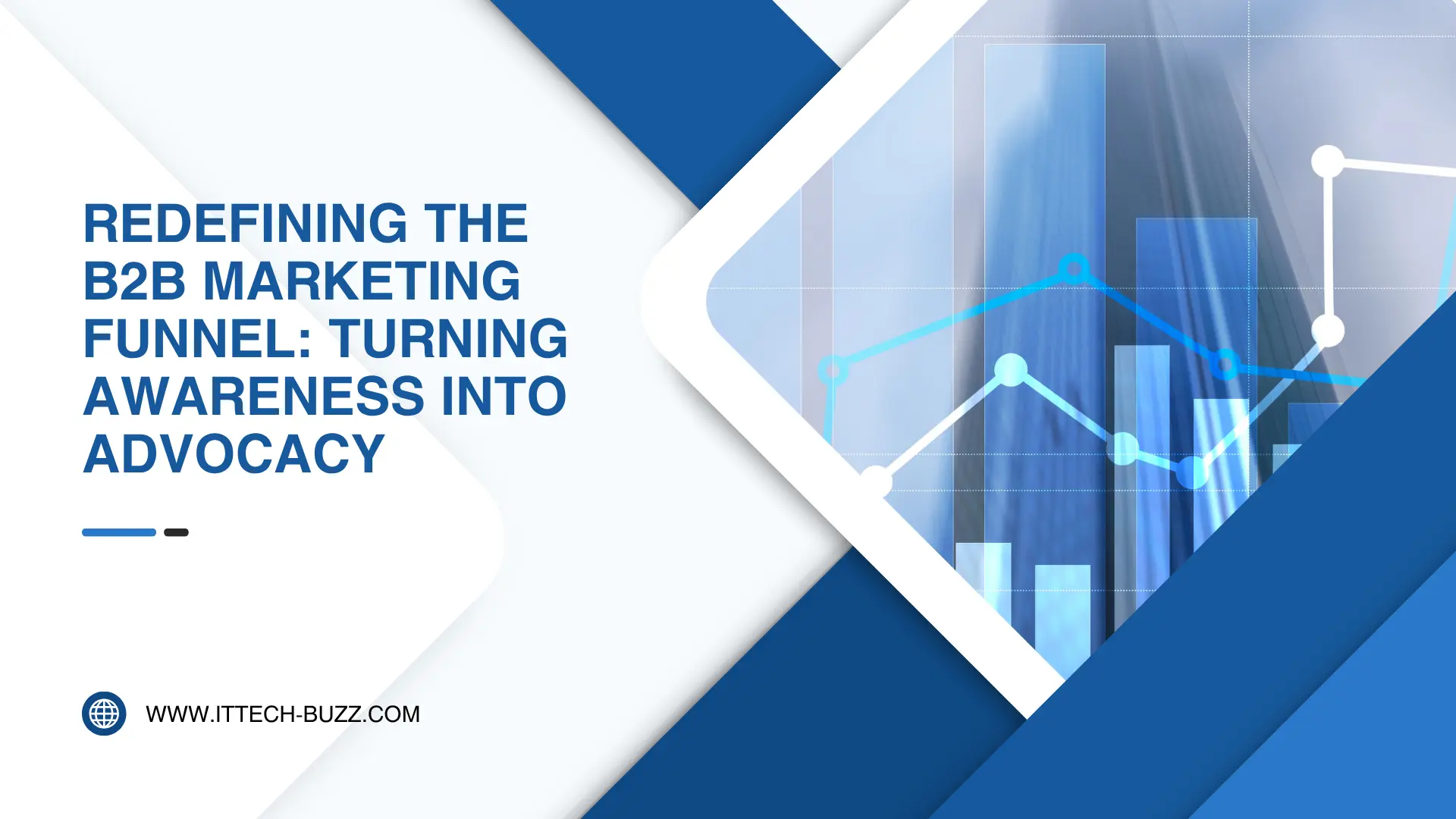Table of Contents
The modern B2B marketing funnel is no longer a straight path — it’s an adaptive ecosystem built on strategy, behavioral insight, and meaningful engagement. As buyer expectations evolve, businesses must rethink how they guide prospects from first interaction to long-term advocacy.
Here’s a streamlined look at how to master every stage of the B2B funnel with actionable, data-backed strategies.
1. Awareness – Build Trust Before the First Click
The awareness stage is about visibility and credibility. According to the Content Marketing Institute, thought leadership and educational content are key to earning trust early.
Smart tactics:
- Publish SEO-optimized blogs and LinkedIn articles that showcase your expertise.
- Host webinars or panel sessions to highlight your authority in the space.
- Run targeted campaigns on LinkedIn, YouTube, or even niche communities like Reddit or TikTok.
- Use behavioral segmentation to personalize outreach beyond job titles.
A strong narrative voice helps humanize complex solutions and leaves a lasting first impression.
2. Consideration – Influence Decisions with Proof
At this stage, buyers are comparing solutions and evaluating credibility. According to Demand Gen Report, peer reviews and case studies are the most persuasive forms of content.
Effective approaches:
- Share authentic client success stories and video testimonials.
- Publish transparent product comparison guides.
- Re-engage prospects with retargeting campaigns based on browsing behavior.
- Follow up events or webinars with concise takeaway summaries.
Empathy and relevance make your brand stand out when buyers are narrowing choices.
3. Decision – Simplify the Path to Conversion
The decision stage demands alignment between marketing and sales. Gartner notes that B2B buyers prefer to self-educate but still expect personalized engagement when they’re ready to connect.
Key strategies:
- Offer free demos, product trials, or guided walkthroughs.
- Provide clear pricing and tiered packages to match business needs.
- Equip sales teams with personalized playbooks, one-pagers, and objection handlers.
- Use limited-time incentives or consultation credits to encourage faster decisions.
Clarity, speed, and personalization drive confidence — and conversion.
4. Retention – Deliver Value Beyond the Sale
Retention is where growth becomes sustainable. Forrester reports that brands prioritizing post-sale engagement see higher lifetime value.
Retention best practices:
- Offer structured onboarding and proactive customer check-ins.
- Conduct quarterly business reviews (QBRs) focused on outcomes, not upsells.
- Provide exclusive insights, early product previews, or benchmark reports.
- Foster community spaces where clients share experiences and best practices.
Retention thrives when customers feel continuously supported and valued.
5. Advocacy – Turn Customers into Growth Champions
The final stage transforms satisfaction into brand amplification. HubSpot research shows advocates lower acquisition costs and increase trust more effectively than ads.
Proven tactics:
- Launch referral programs with easy participation and meaningful rewards.
- Feature customers in spotlight stories, interviews, or co-hosted webinars.
- Promote client achievements on your owned channels.
- Create Customer Advisory Boards (CABs) to involve top clients in product strategy.
Advocacy fuels a growth loop — building credibility, loyalty, and innovation simultaneously.
Bridging the Funnel – Navigating a Non-Linear Journey
Modern B2B buyers engage through dozens of digital and offline touchpoints. As McKinsey notes, the funnel must evolve into a flexible framework that adapts to shifting intent signals.
Optimization ideas:
- Link content across stages with contextual CTAs and personalized web experiences.
- Use CRM and marketing automation to track behavior and tailor engagement.
- Keep nurturing long-cycle leads with relevant insights and dynamic content.
Every touchpoint should reinforce clarity, trust, and value — no matter where the buyer stands.
Mastering the B2B marketing funnel is about strategic storytelling and data-driven personalization. When marketing and sales align around buyer intent, every stage — from awareness to advocacy — becomes an opportunity to build relationships, not just revenue.
